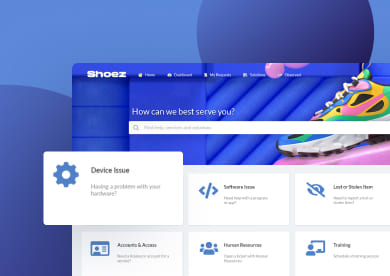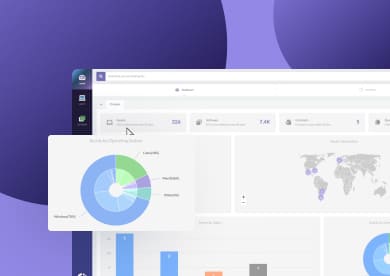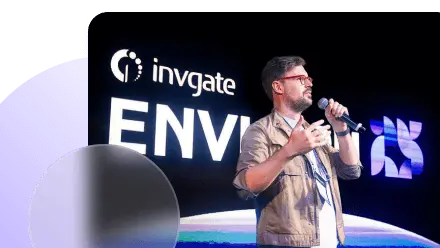An IT asset manager job description is a detailed overview of the role’s purpose, scope, and expectations within an organization. It’s also a valuable resource for professionals who want to better understand the position and stay up to date with the latest trends in IT Asset Management.
In this article, we’ll look at the key skills, knowledge, and qualifications included in a modern IT asset manager job description. We’ll also share practical tips for those considering taking on this role or looking to strengthen their IT Asset Management career path.
What does an IT asset manager do?
An IT asset manager is responsible for overseeing the organization’s entire IT environment, ensuring that every asset is accounted for, optimized, and performing as expected. This includes hardware, software, and any other IT resources used within the organization.
Beyond maintaining visibility over the IT landscape, IT asset managers develop and execute a comprehensive ITAM strategy. This involves managing asset lifecycles, aligning technology with business goals, and leading an ITAM team to ensure efficiency, compliance, and cost control across the organization.
IT asset manager role and responsibilities
The main role of an IT asset manager is to develop, maintain, and implement an ITAM strategy that covers the entire lifecycle of IT assets. This strategy ensures that every device, license, and service is treated as a valuable business resource that contributes to productivity, efficiency, and overall organizational goals.
Here’s what that looks like in practice:
#1. Manage the full IT asset lifecycle
Oversee every stage of an asset’s journey—from planning and procurement to deployment, maintenance, and secure disposal—to ensure technology investments deliver continuous value.
#2. Maintain an accurate and transparent inventory
Keep a centralized, up-to-date record of all hardware, software, and cloud assets to enable visibility, accountability, and smarter decision-making across the organization.
#3. Ensure compliance and risk mitigation
Monitor licensing, data protection, and security requirements to avoid costly penalties, reduce vulnerabilities, and maintain full regulatory compliance.
#4. Optimize costs and asset utilization
Analyze usage data to identify underused or redundant assets, reduce waste, and reinvest savings into higher-value technology initiatives.
#5. Collaborate across departments
Work closely with finance, procurement, and security teams to align ITAM goals with business priorities and create a unified approach to Asset Management.
IT asset manager qualifications
While there’s no single path to becoming an IT asset manager, having the right IT Asset Management certifications can help you stand out in a competitive market. Here are five valuable qualifications that can help you advance your IT Asset Management career:
- IAITAM Certified IT Asset Manager (CITAM) – One of the most recognized certifications for ITAM professionals. It validates your ability to design, implement, and manage asset management programs at scale.
- ITIL® Foundation Certification – Focuses on aligning IT services with business needs. It’s useful for understanding how ITAM integrates with broader IT Service Management (ITSM) frameworks.
- Certified Hardware Asset Management Professional (CHAMP) – Also from IAITAM, this credential zeroes in on managing physical IT assets throughout their lifecycle.
- Microsoft Certified: IT Asset Management Professional (or similar vendor certifications) – Demonstrates hands-on knowledge of managing software assets, licensing, and compliance within specific environments.
- ISO/IEC 19770 awareness or training – While not a certification per se, familiarity with this international standard for IT Asset Management shows that you understand the global best practices guiding the discipline.
In short, you don’t need every certification to land a job as an IT asset manager, but having one or two reputable credentials (paired with real-world IT or procurement experience) can set you apart and help you build a long-term career path in IT Asset Management.
“Some certifications are really good to have, but they’re also really expensive. I always like to go based on free training first — creating a home lab or fixing your resume or LinkedIn — because sometimes it’s not what you know, it’s who you know.”
Kevin Apolinario, Technical Trainer & Speaker
IT asset manager skills
The IT asset manager job description goes far beyond tracking hardware and software — it requires a balance of technical expertise, analytical thinking, and business awareness. Because the role connects IT operations, finance, and procurement, a successful IT asset manager must combine strategic insight with hands-on execution and strong communication skills.
Here are the key skills every IT asset manager should develop:
- Analytical thinking – Interpreting data to identify usage trends, forecast needs, and optimize costs.
- Technical knowledge – Understanding IT infrastructure, licensing models, and IT Asset Management software to manage and troubleshoot assets effectively.
- Negotiation skills – Managing vendor relationships and renewals to secure the best value for the organization.
- Budgeting and cost control – Planning and monitoring asset-related budgets to maximize ROI and reduce waste.
- Communication skills – Bridging the gap between technical teams, executives, and external suppliers through clear and effective communication.
- Attention to detail – Ensuring accuracy in asset documentation, tracking, and reporting.
- Problem-solving – Addressing day-to-day challenges such as audit discrepancies, configuration issues, or hardware shortages quickly and efficiently.
Ultimately, a great IT asset manager combines strategic vision with operational precision, turning data and processes into real business value.
IT Asset Management interview questions
The IT asset manager job description spans strategy, lifecycle execution, risk and compliance, vendor/finance alignment, and tooling. Below are the core interview categories you should prepare for, each with a short setup and practical question examples.
#1. Strategy and operating model
A strong candidate can design and run an ITAM strategy that ties to business goals.
- How would you build an ITAM strategy for a company moving to hybrid cloud?
- Which business KPIs would you map ITAM metrics to, and why?
- What’s your 90-day plan to mature a low-visibility ITAM function?
- Tell me about a time ITAM data changed a buy vs. extend vs. retire decision.
#2. Asset Lifecycle Management (hardware, software, cloud/SaaS)
End-to-end control from request to secure disposal.
- Walk me through your lifecycle stages and key controls at each step.
- How do you plan refresh cycles without wasting usable life?
- How do you manage shadow IT and unsanctioned SaaS?
- Give an example of redeploying or repurposing assets to cut cost.
#3. Inventory, discovery, and Configuration Management Database/service context
Reliable inventory, reconciled sources, and service-aware relationships.
- Which discovery methods do you combine to hit >95% coverage?
- How do you reconcile agent scans, network discovery, and procurement data?
- How do you model business applications and dependencies in the CMDB?
- A critical service is missing Configuration Items (CIs). How do you restore accuracy fast?
#4. Software License Management and compliance (SAM)
Audit-ready entitlement hygiene plus cost optimization.
- How do you normalize titles, editions, and metrics across vendors?
- You have 30 days before a vendor audit. What’s your plan?
- Share a time you reduced license spend without hurting users.
- How do you govern fast-changing licensing models (user to consumption-based)?
#5. Vendor, contract, and financial optimization
Commercial discipline that aligns buying with lifecycle realities.
- How do you evaluate total cost of ownership vs. sticker price?
- Which clauses do you push for in hardware and SaaS contracts (EOL, data export, true-up)?
- Describe a renewal you renegotiated using utilization data.
- Lease vs. buy for end-user devices: how do you decide?
IT asset manager blueprint to start a new job
Becoming a successful IT asset manager takes more than technical expertise. It requires a broad understanding of how assets connect to business value and the ability to put clear, effective strategies into action from day one. Here’s how to build a strong foundation in your new role.
#1. Communicate and establish asset policies
Start by making asset policies clear and accessible. Define what counts as an IT asset, how it should be purchased, and who is responsible for managing it. Work closely with finance and procurement teams to align budgets and vendor options, and track asset ownership across employees to justify renewals and operational needs.
#2. Enforce policies consistently
Once policies are defined, make sure they’re followed. Require prior approval for any software installations, even free tools, to prevent security risks or licensing issues. Regular audits and compliance checks will help you detect unauthorized applications and enforce accountability across teams.
#3. Identify and assess risks
Visibility is the cornerstone of risk management. By understanding how assets are distributed and used, you can quickly identify vulnerabilities that could lead to data breaches or compliance failures. Evaluate risks based on their potential business impact and prioritize remediation accordingly.
#4. Mitigate risks proactively
Once risks are identified, act on them. Remove unsupported or risky software, strengthen access controls, and implement security measures like encryption or firewalls. Continuous monitoring and real-time reporting will help you detect issues early and reduce exposure to threats.
#5. Document and share results
Keep your documentation comprehensive but accessible. Use ITAM dashboards instead of static spreadsheets to create transparency and give stakeholders a clear view of the organization’s asset health. Regularly share metrics that demonstrate progress (like reduced costs, improved compliance, or higher asset utilization) to keep teams aligned and engaged.















